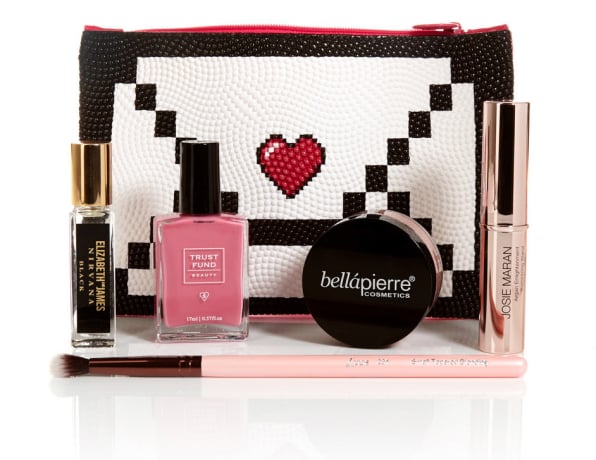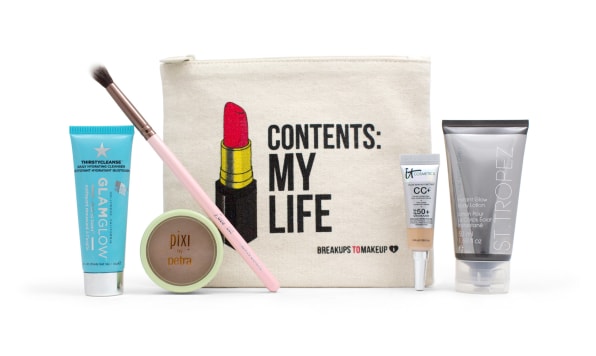Beauty Subscriptions Are A Tough Racket, But Ipsy Is Sitting Pretty
On the surface, you might think of Ipsy as just another subscription-based beauty supply company. Similar to Birchbox or Glossybox, customers can sign up for a monthly delivery of customized beauty samples, allowing them to explore new products on the market. The brand’s massively popular Glam Bags cost $10 but include nearly $50 worth of full-sized and deluxe samples. This month, Ipsy hit a 2.5 million subscriber milestone, placing it way ahead of its competition at a time when major players like Birchbox have scaled back.
But Ipsy’s founders–Michelle Phan, Jennifer Goldfarb, and Marcelo Camberos–didn’t conceive of their company as part of the subscription commerce revolution when they launched it in late 2011. “The Glam Bags were never the point,” Camberos tells Fast Company. “Our plan was to create a company that would be relevant in the current beauty market. These days, beauty brands don’t decide what products are cool: Instead, it’s beauty bloggers and other creators that are controlling the conversation.”

Camberos, the company’s CEO, points out that a decade ago, beauty brands would release new collections of products two or three times a year, then launch large, expensive advertising campaigns to convince consumers that these new shades and looks were in style. Then, beauty bloggers showed up and changed the game. Instead of looking to brands to set the agenda about what products they should buy, consumers began looking to their peers, who in turn began creating videos and tutorials on YouTube. This created a crisis of sorts in the beauty industry.
“The beauty world had been totally disrupted,” Camberos says. “We wanted to be at the forefront of the new way that consumers would interact with beauty brands.”
Ipsy’s strategy had many facets. It supported beauty bloggers, or “creators” in the brand’s parlance. Michelle Phan, who cofounded the brand, was deeply familiar with the content creator community, having started her career as a well-known blogger and YouTube personality. She was able to spot talented bloggers and help grow their audience. This made Ipsy especially well-positioned to help beauty brands put their products in front of consumers: Companies could pay to put samples in Glam Bags and have these influential creators show their viewers how to use them. From the consumers’ perspective, it was an easy sell. They could get a new bag every month that was worth five times the amount they paid for it. “There are many business challenges we’ve tackled, but getting customers excited about our Glam Bags was never one of them,” Camberos explains. “They’re a no brainer.”
Camberos attributes Ipsy’s success to the following three factors:

Correctly Identifying The Business Opportunity
Ipsy entered the market just as the subscription craze was taking off. Birchbox was among the first movers in this space, creating monthly beauty boxes that were a huge hit. But soon there were boxes for everything from socks to sex toys, as I documented in a story from 2015. Many of these new companies focused their business on the subscription itself, trying to make a profit from the sale of the monthly or quarterly box.
But for Ipsy’s founders, it was clear that the monthly Glam Bags would not be a sustainable source of revenue. A far more lucrative strategy would be to help beauty brands market their products and help content creators become even more powerful so that, in a virtuous cycle, they would be even more valuable to the beauty brands.
Constantly Improving The Product
Even though the Glam Bags weren’t the point of the business, they were a way to attract customers, so Ipsy has invested a lot of resources into making each month’s bag special. Unlike many other subscription services that make disposable boxes, Ipsy’s Glam Bags are made of fabric and specially designed every month, so that they can be kept and reused. The contents of the bag are also premium: Ipsy works with beauty brands to make sure that customers get a selection of full-sized products, among the samples. (And the company never gives those terrible little packets of lotion and shampoo that are impossible to tear open, much less sample properly.)
But the real challenge was customization. “From the very beginning, we wanted Ipsy to be a personalized beauty service,” Camberos says. “But this proved much harder than we expected. It’s a difficult mathematical challenge, but also one that involves knowing about each individual beauty product.”

The company has been trying to crack the nut on this problem for four years, with only small improvements. The real breakthrough came when Ipsy hired Chris Alvino—previously a senior researcher at Netflix—as its director of personalization. Alvino took on the task of making sense of all the data points he had about the millions of customers in the database, then tagging different products based on information about which users liked them. Ipsy also made sure that the data team that Alvino leads is seated next to employees who are experts on the beauty products themselves, so there can be discussion between these two groups. “I don’t fully understand all the nuances of what Chris is doing with the data,” Camberos says. “But I know that our feedback from customers has dramatically improved.”
Nurturing Talent
From the start, Ipsy realized that it was in a symbiotic relationship with content creators. The company was in a position to help individual social media personalities grow their platform, but these creators would also help Ipsy be an invaluable partner to beauty brands. Ipsy helps all content creators who are interested in participating, no matter how small, offering them space in the official studio to do their videos and providing resources such as tax advice.

But the company also helps a handful of up-and-coming personalities to become major stars. These individuals sign a three-year contract with Ipsy, where they are paid a salary and given opportunities to work with brands. Some of the official Ipsy creators include Cyndee Black, Karen O, LaMadelynn, and Madison Miller. While this is a once in a lifetime opportunity for them, Ipsy also benefits from their celebrity both by having them do tutorials about the products in the Glam Bags, and making money from ads and events that feature them.
The subscription craze has slowly fizzled out. Brands like Birchbox have fallen on hard times, while dozens of other boxes have folded altogether, including bumpBox for pregnant women, Spark Box for couples, and quarterly cosmetics subscription Beauty Fix. In this climate, Ipsy’s thriving 2.5 million subscriber base stands out.
To Camberos, the secret to its success was not to be distracted by the subscription part of the business, but to focus on the bigger problems in the beauty industry that needed to be tackled with innovative solutions.
Fast Company , Read Full Story
(59)














